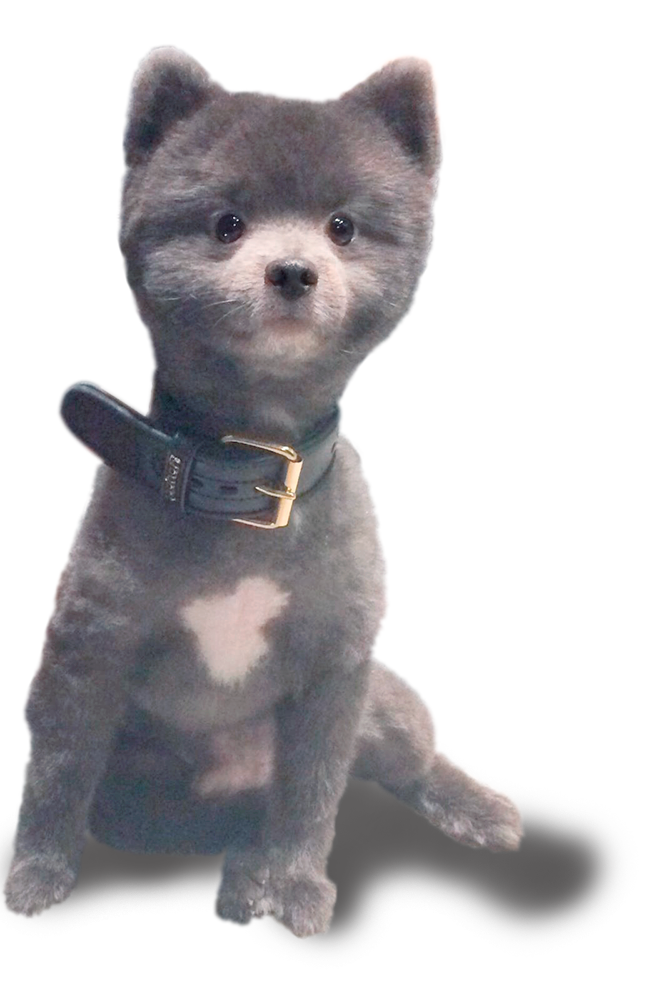
Exotic Spitz
Spain's first Exotic Spitz doggery.
All Breeding animals free of genetic diseases, tested in UC Davis university (USA).

Exotic Spitz Standard
ORIGIN: Russia/Spain.
LAST UPDATE: 08/12/2019.
UTILIZATION: Companion Dog. Toy Group.
CLASSIFICATION: Spitz and primitive types. European Spitz without working trial.
BREED HISTORY: The Exotic Spitz is a very exclusive breeding selection made by russian breeders and fixed in Spain with old German Spitz bloodlines. The goal of this new breed is a healthy dog, with a small size that fits easily into the modern urban lifestyle, but with an agile behavior to be a great walking companion into the park or in the field, with bear cub look like, extraordinarily soft feel coat that is not lost and won´t stain clothes or furniture , and that seems to be a large breed puppy its whole life, the eternal BEAR CUB that delights in being with their human companions, and that are bred just for enjoying them, that´s the Exotic Spitz!
This picture shows the ideal example of the breed
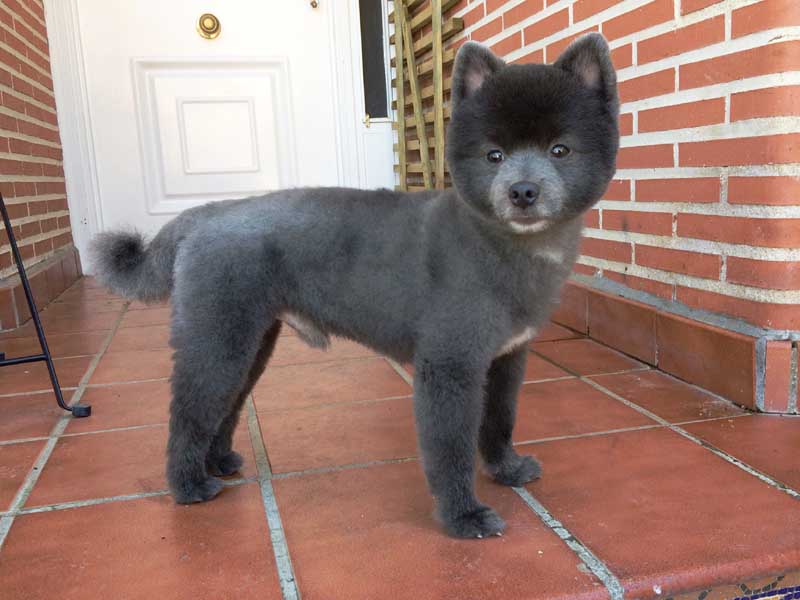
General appearance
The Spitz´s dog group is a set of breeds resulting from an ancient extint asian wolf and whose main characteristic is that they have a double coat; the undercoat, short, woolish and the defense against inclement conditions, and usually lost in summertime; and the outer coat, with long and straight hair. Small, erect and pointed ears on the head. Curly and raised tail. The spitz breeds group is large, have breeds in every continent and with many sizes, such as: German Spitz, Volpino Italiano, Chow Chow, Eurasier, Akita Inu, Shiba Inu, Japanese Spitz, Siberian Husky, Alaskan Malamute, Sharpei, Keeshond, Pomeranian or Samoyedo, to say the most well-known. All the Nordic sled dogs are Spitzs but most of the Spitzs aren´t Nordic sledge dogs.
The Exotic Spitz is developed from old toy german spitz bloodlines, upon which were selected healthy animals, with a bear cub look like, in other words, furry head, small eyes and inside their sockets, prominent and doggy muzzle, small and erect ears, great coat quality and dense undercoat in exotic colors, scissors bite, no open fontanela and a very good health condition.
PROPORTIONS: The ratio of height at withers to body length is 1 : 1.
PERSONALITY: The Exotic Spitz is a very devoted dog to it´s human family, being easy to train due his intelligence, his truly attribute is just to enjoy of them. The Exotic Spitz is a loving and outgoing dog that delights in being with people. They are highly intelligent and interactive dogs that also get on well with other pets, besides having no aggressiveness nor being into the “problematic” or “difficult to train“ breeds as some other primitive dogs as shiba inu or czechoslovakian wolfdog. They are easygoing animals (no timid at all) that delights in a quiet home living, but without any physical barrier due their right proportions for running or be close to you in your cycling trips. They are very well children and older people oriented as they walk at the same step than their human companions.
Indifference to the bad weather due their impermeable coat they can also live in sunny areas as they lose the undercoat in summer, they are all rounder dog.
This picture shows the ideal example of the breed
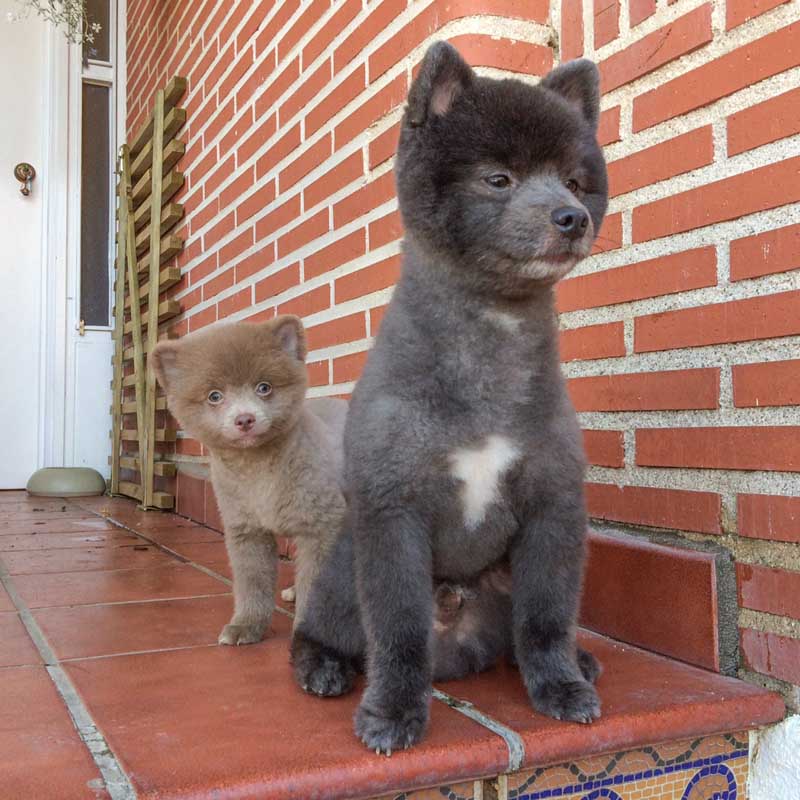
Head
CRANIAL REGION: The size head, seen from above, appears broadest at the back and tapers in wedgeshape to the tip of the nose.
Stop: Moderate to marked, never abrupt.
FACIAL REGION:
Nose: The nose is round, small and can be black or with the same color of the coat.
Muzzle: The muzzle is not overlong and stands in pleasing proportion to the skull. The ratio length of the muzzle to length of the skull is approximately 2:3.
Lips: The lips are close fitting to the jaws and do not form any folds to the corner of the mouth. They can be black or with the same color of the coat.
Jaws/Teeth: The jaws are normally developed and show a complete scissor bite. Pincer-bite is permissible
Cheeks: The cheeks are rounded, not protruding.
Eyes: The eyes are medium to small size, longish shape, slightly slanting and all colors are accepted except merle gene. The eyelids are with similar color of the coat, except in chocolate color that light brown is also typical.
Ears: The ears are small, triangular and pointed; they are always carried upright, stiff at the tips.
NECK: The medium length neck is set broadly into the shoulders and slightly arched without throatiness.
Body
Topline: The topline starts at the tips of the erectly carried prick-ears and merges in a gentle curve with the short, straight back. The bushy, sweeping tail, which partially covers the back, rounds off the silhouette.
Withers / Back: The high withers drop imperceptibly into the shortest possible, straight, firm back.
Loin: Short-coupled, broad and strong.
Croup: The croup is broad and short, not falling away.
Chest: The deep chest is well sprung, the forechest well developed.
Underline and belly: The brisket reaches as far back as possible; the belly has only a slight tuck up.
TAIL: The tail is set on high and of medium to small length. It reaches upwards and rolls forward over the back, straight from the root. It lies firmly over the back.
This picture shows the ideal example of the breed
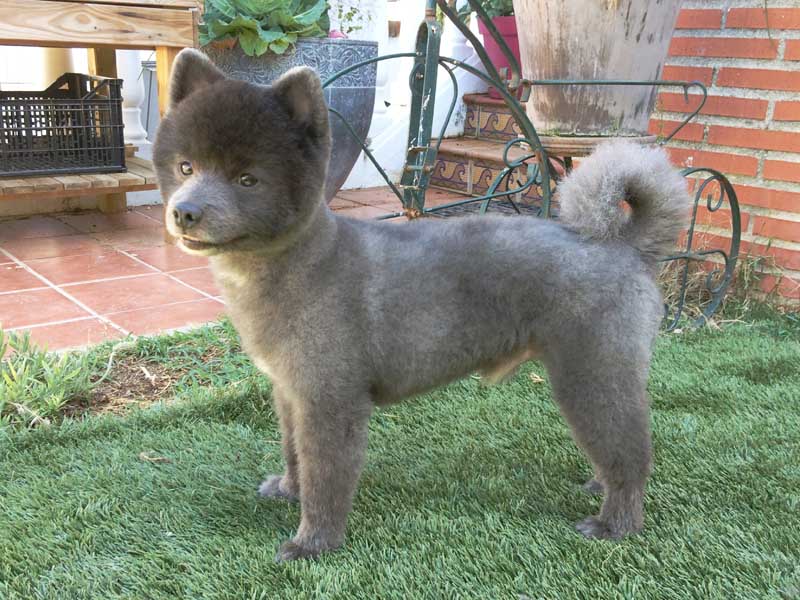
LIMBS
FOREQUARTERS:
General appearance: Straight, rather broad front.
Shoulder: The shoulder-blade is long and well laid back. The shoulder is well muscled and firmly connected to the brisket.
Upperarm: The upper arm, which is approximately the same length as the shoulder-blade, forms an angle of 90 degrees to the shoulderblade.
Elbow: The elbow joint is strong, close fitting to the brisket and turns neither in nor out.
Forearm: The forearm is of medium length in relation to the body, sturdy and completely straight. The back of the forearm is well feathered.
Metacarpus (Pastern): The strong, medium length front pastern stands at an angle of 20 degrees from the vertical.
Frontfeet: The frontfeet are as small as possible, round and closed, so called cat feet, with well arched toes. Toe-nails and pads are in the same color than the coat.
HINDQUARTERS:
General appearance: The hindquarters are very muscular and abundantly feathered to the hocks. The hind legs stand straight and parallel.
Upper and lower thigh: Upper and lower thigh are of about equal length.
Stifle (knee): The stifle joint is strong with only moderate angulation and is turned neither in nor out in movement.
Hock / hock joint: The hock is of medium length, very strong and vertical to the ground.
Hind feet: The hind feet are as small as possible, tightly closed with well arched toes, so called cat feet. The pads are coarse. The colour of nails are refered to the coat color.
GAIT/MOVEMENT: The Exotic Spitz moves straight ahead with good drive, fluid and springy.
SKIN: The skin covers the body tightly without any wrinkles.
This picture shows the ideal example of the breed
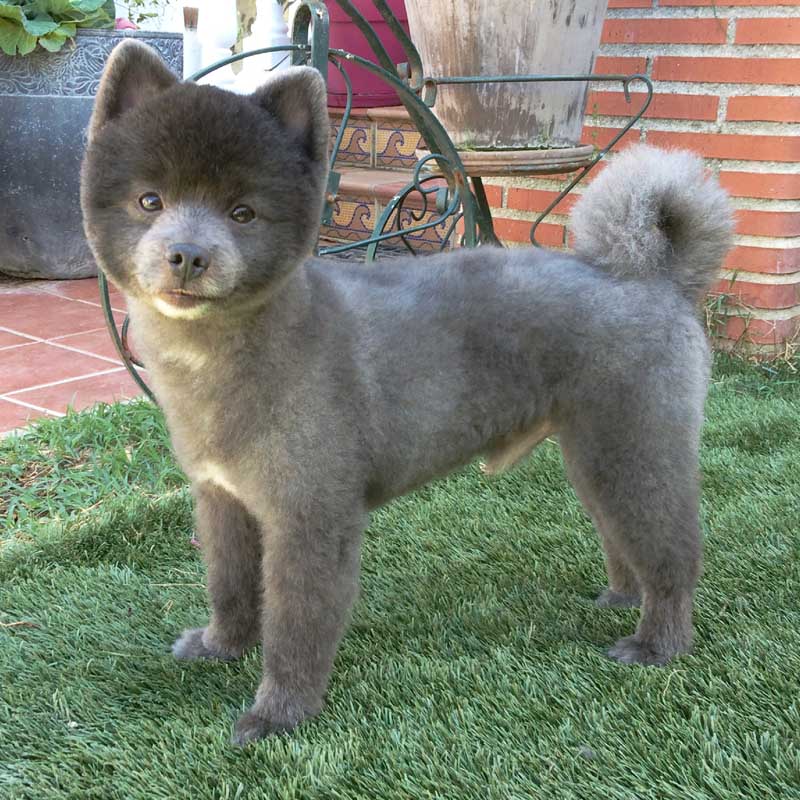
Coat
Hair: The Exotic Spitz has a double coat : Long, straight, stand off top coat and short, thick, cotton-wool-like rich and dense undercoat. Head, ears, front side of front and hind legs and the feet are covered by short, thick (velvety) hair. Face can have a mask as samoyedo. The rest of the body has a long rich coat. Not wavy or curly except when wet, not parted on the back. As much the front legs as the hind legs, as well as the tail must have a dense coat.
Color
Only are accepted exotic colors : Pewter Gray (Blue gene), Camel ( Lilac gene), and Chocolate (chocolate gene) , in solid, particolor, and tan variants with every white markings. Chocolate can be in any shade but as blue as lilac, the clearer the better.
Merle color is not accepted due their genetic health implications.
This picture shows the ideal example of the breed
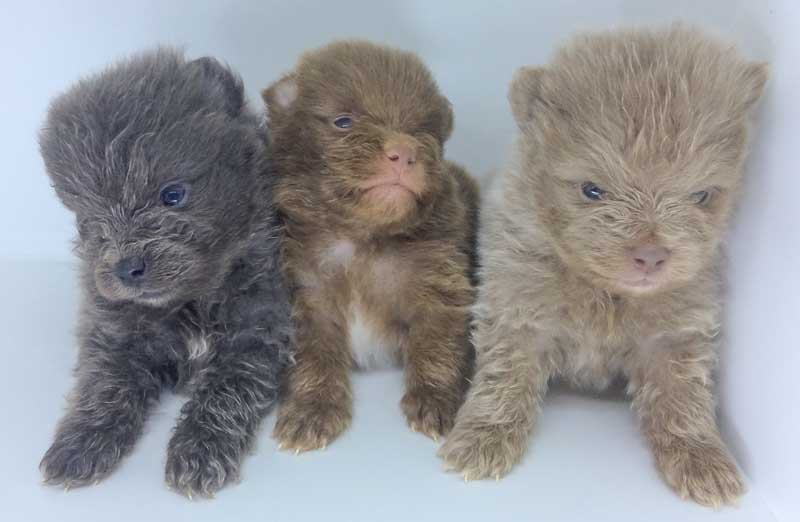
This picture shows the ideal example of the breed
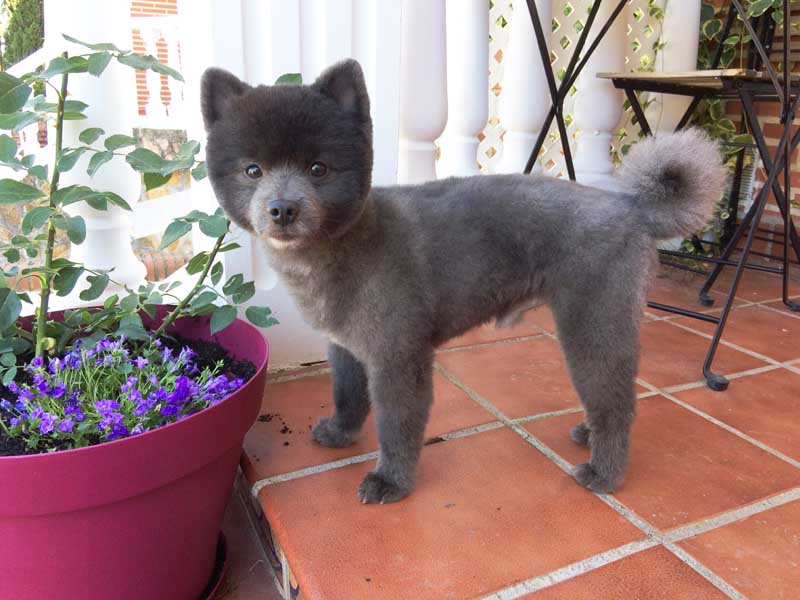
Size and Weight
Height at the withers: 12.6 inches +/- 1.5 inch (32 cm +/- 4 cm)
Weight: Corresponding to its size. Around 8.8 pounds (4 kg ) for males a significantly less the females.
Faults
FAULTS: Any departure from the foregoing points should be considered a fault and the seriousness with which the fault should be regarded should be in exact proportion to its degree and its effect upon the health and welfare of the dog.
DISQUALIFYING FAULTS:
- Aggressive or overly shy.
- Any dog clearly showing physical or behavioural abnormalities shall be disqualified.
- Gap in fontanel.
- Over-or undershot bite.
- Ectropion or entropion.
- Semi-pricked ears.
N.B:
- Male animals should have two apparently normal testicles fully descended into the scrotum.
- Only functionally and clinically healthy dogs, with breed typical conformation should be used for breeding.
Biography of the Breed Developer
Pablo Iglesias, Born in Madrid (Spain) in 1969.
Just Pablo´s life as much as his brother Raul have revolved around pets world. In the house of the Iglesias family all pets were welcomed from their childhood. His history with pets began at the early age of 6 years old with his first tropical fish aquarium and continued some years, animals and shows later with his veterinary studies and his own pet stores for more than 15th years.
After that long experience with animals he decided to change his employment and to live with his pets just as family members and not as a work anymore.
His first meeting with the Exotic Spitz breed was more by chance than by anything else, when he was looking for to buy a dog to make a special gift to a friend, while he was looking for a Pomeranian was just when accidentally he was noticed that some Russian breeders were breeding a type of spitz not related with Pomeranian but with the same ancestor, the German Spitz dog breed. Breeders told him that they were registering the dogs as German Spitzs non standard to avoid too much paperwork if they registered them as a new breed.
He imported a blue dog from Saint Petersburg (Russia) to Madrid (Spain), felt in love with him, but gifted him to his friend.
One year later his friend told him she was happy with the dog, but she would have liked more a smaller dog, so Pablo bought a wonderful red Pomeranian, and exchange the red pom for the Blue Exotic Spitz. And was right in that moment when the first Exotic Spitz organised breeding programme of the world was stablished in Spain. After the first blue male, some other males and females were imported from Russia, some of them were discarded for the breeding programme and with the other ones a hard selection job was begun to the present day to purify the breed standard.
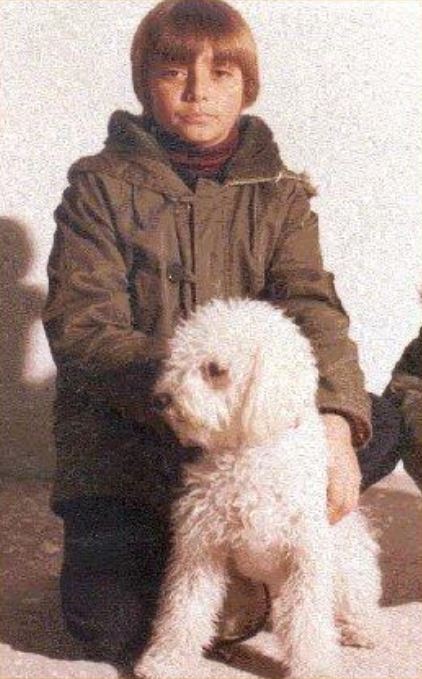
Pablo in his first dog show in Madrid,1982, at the age of 13th.
